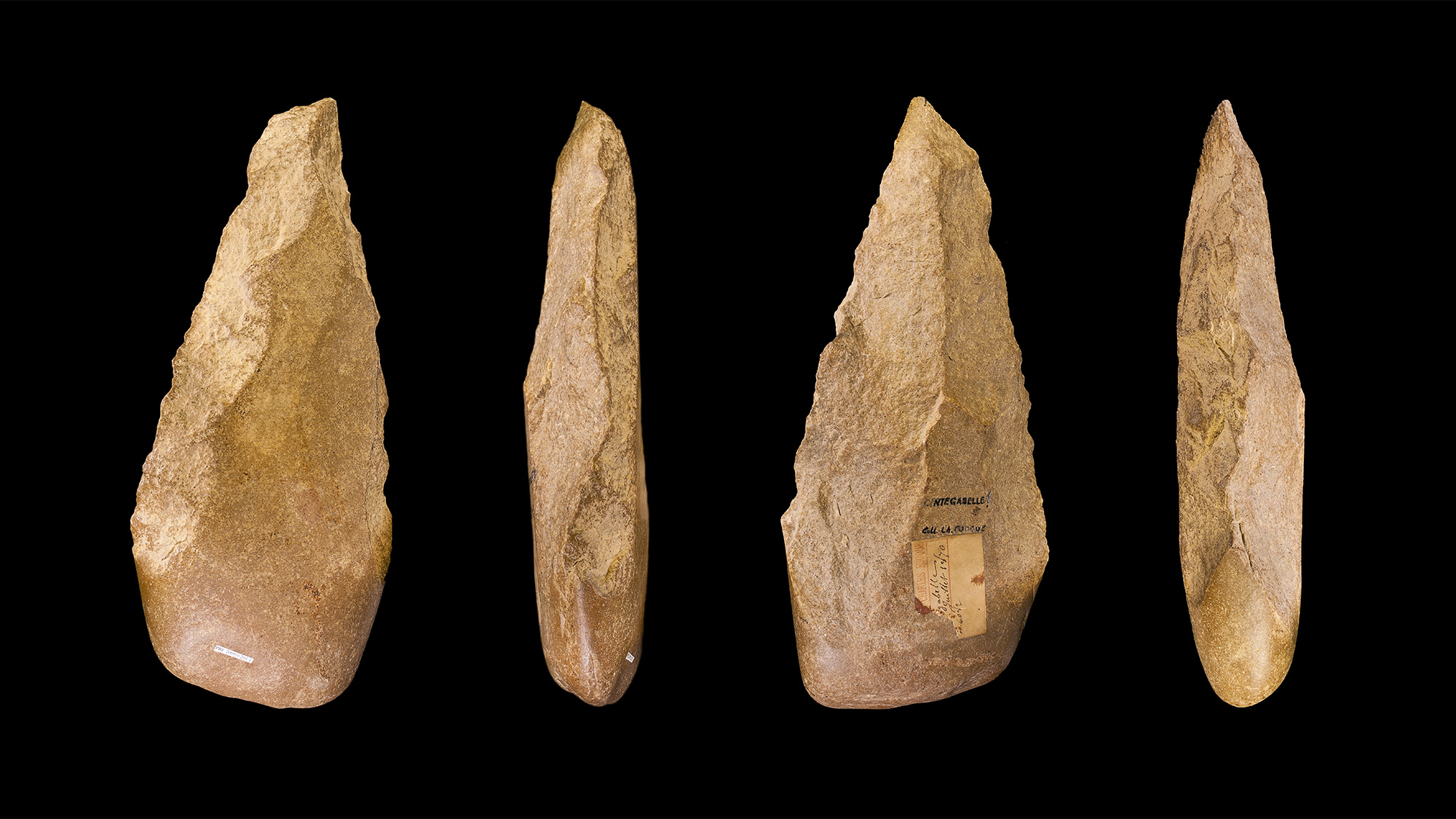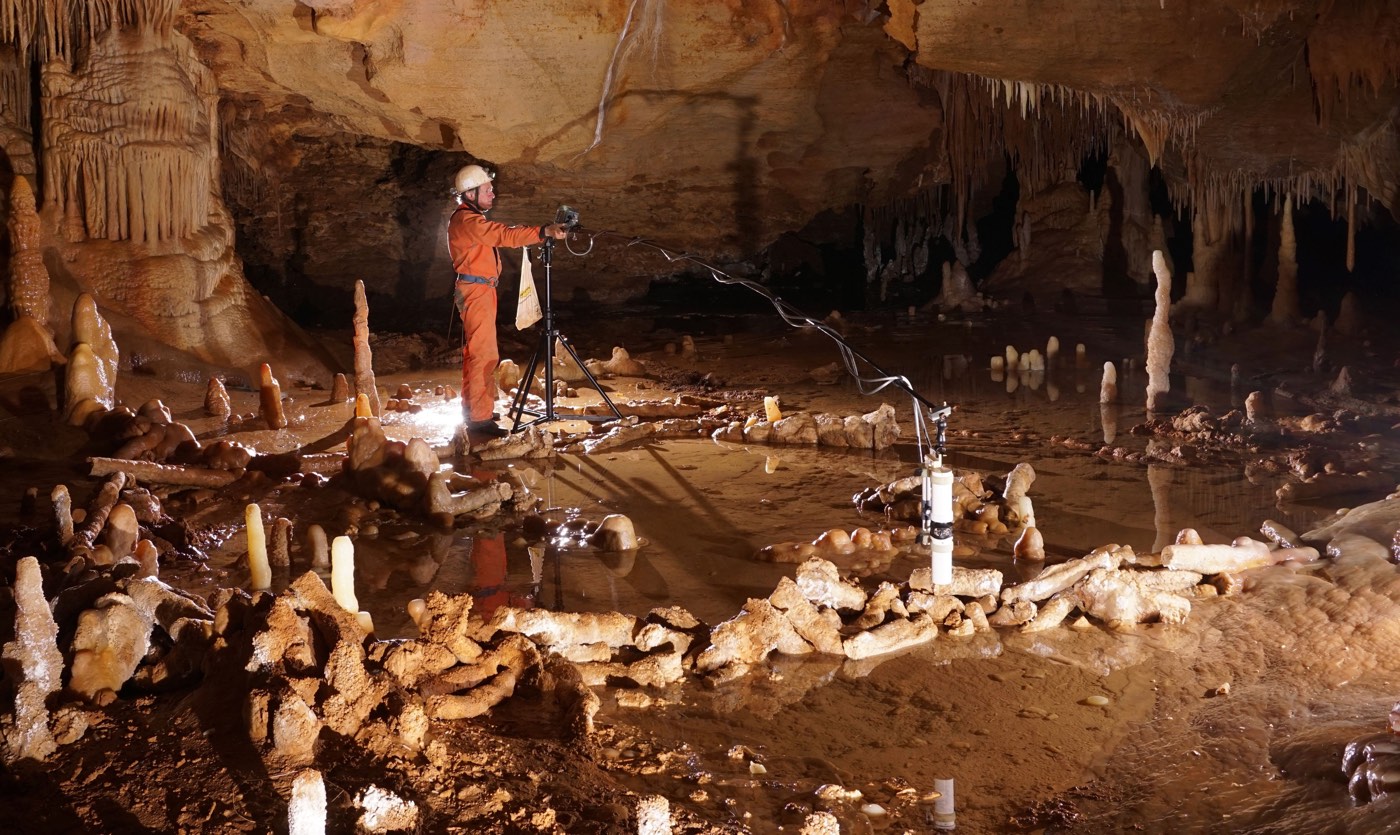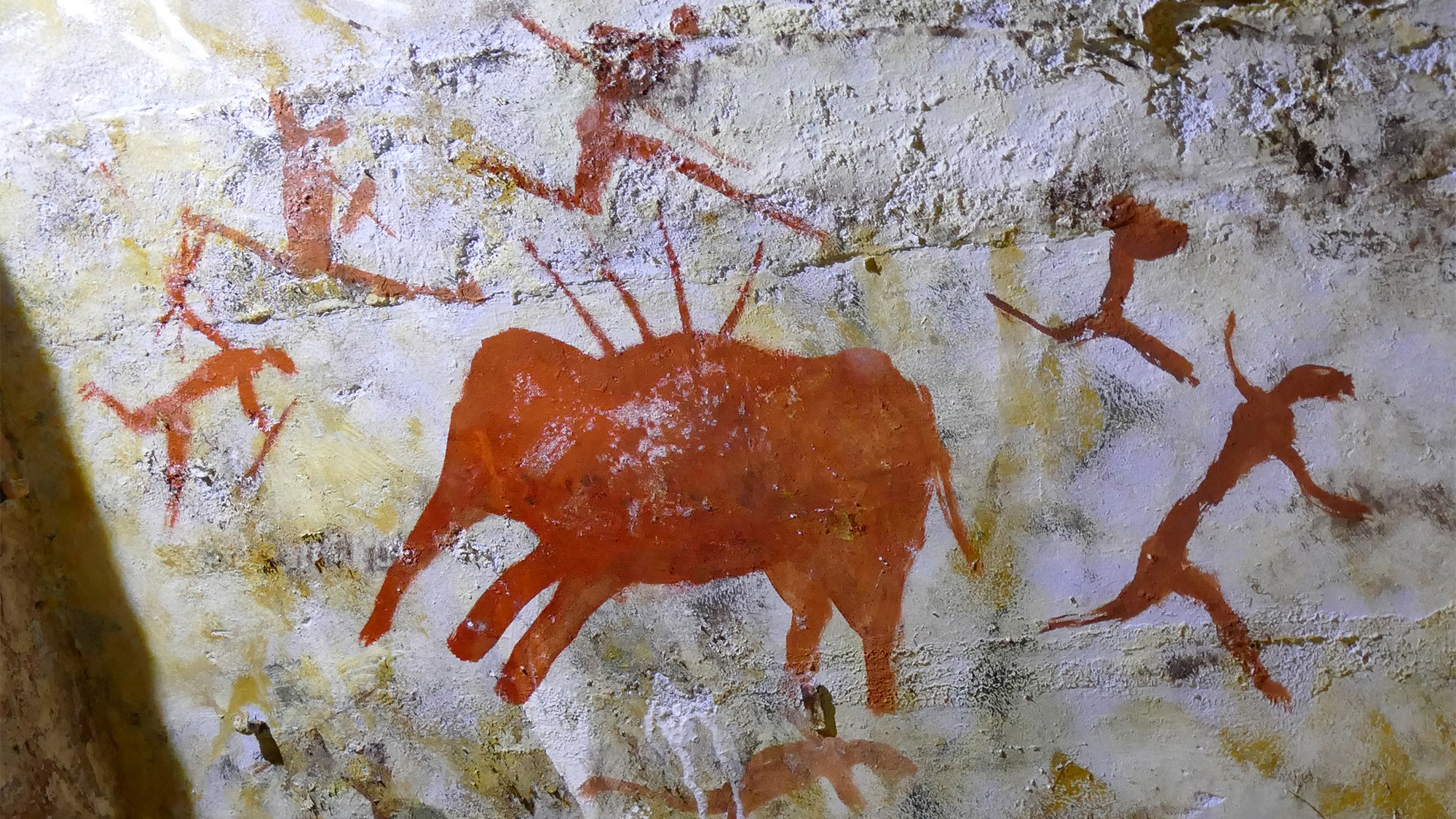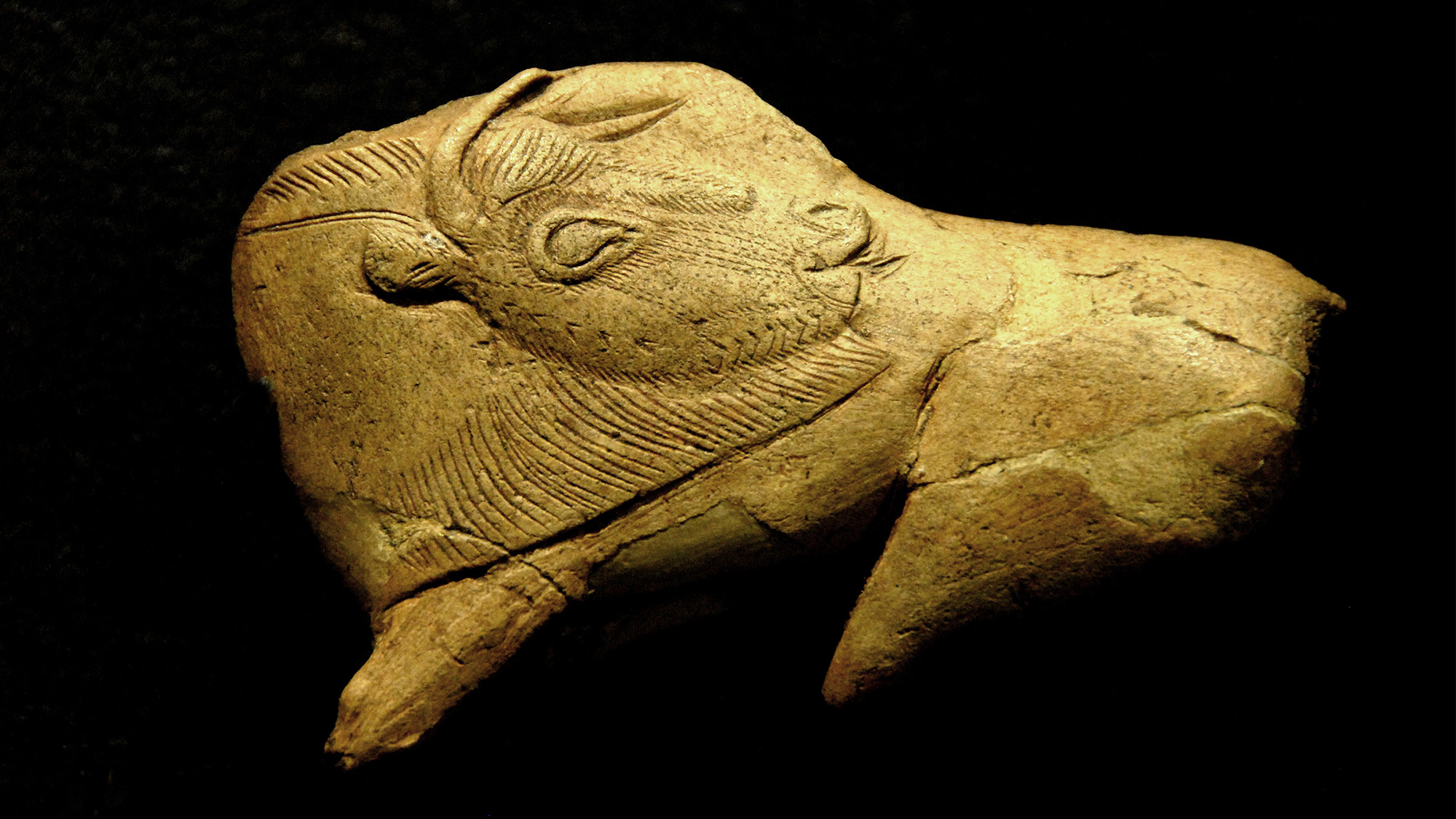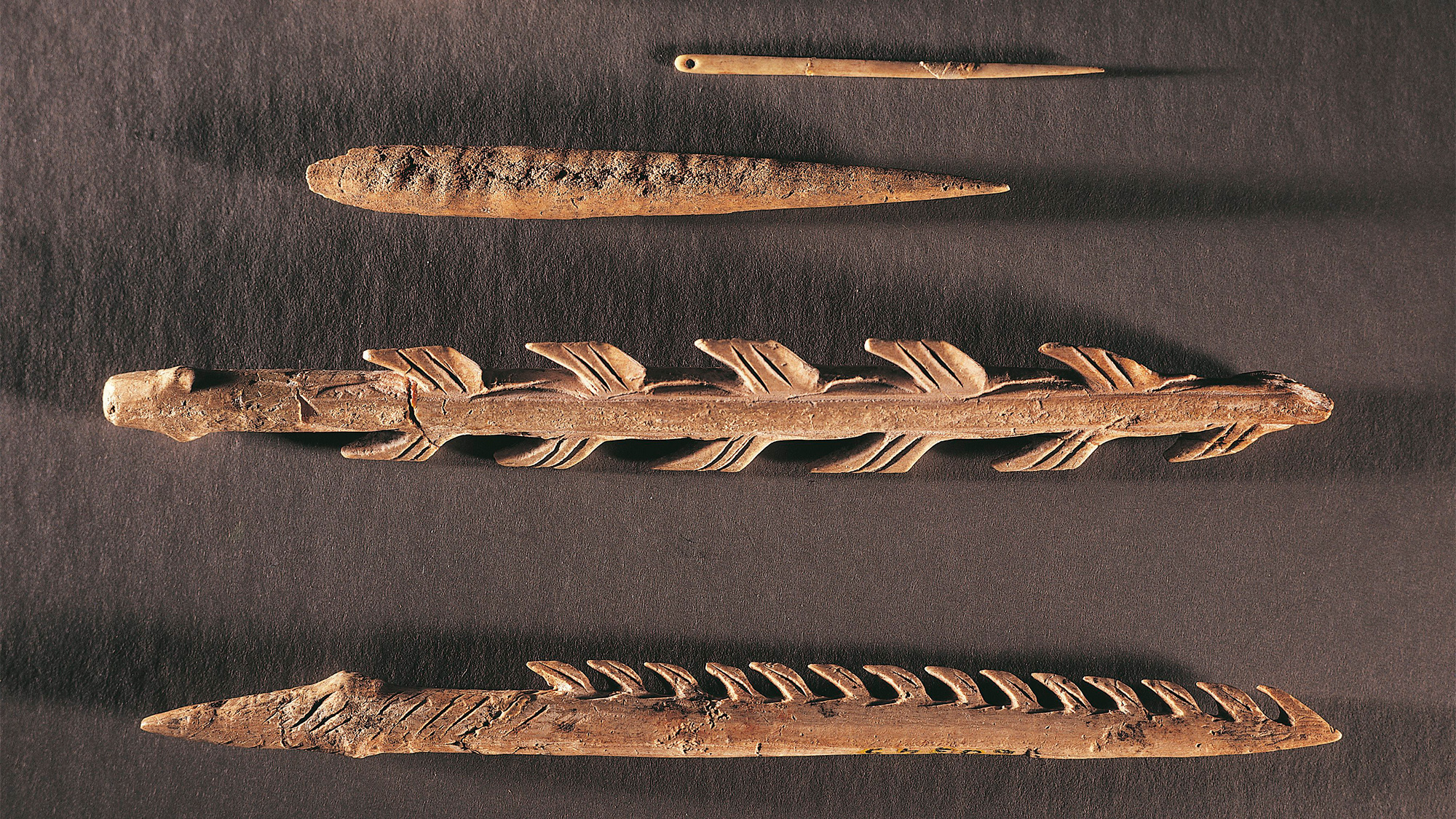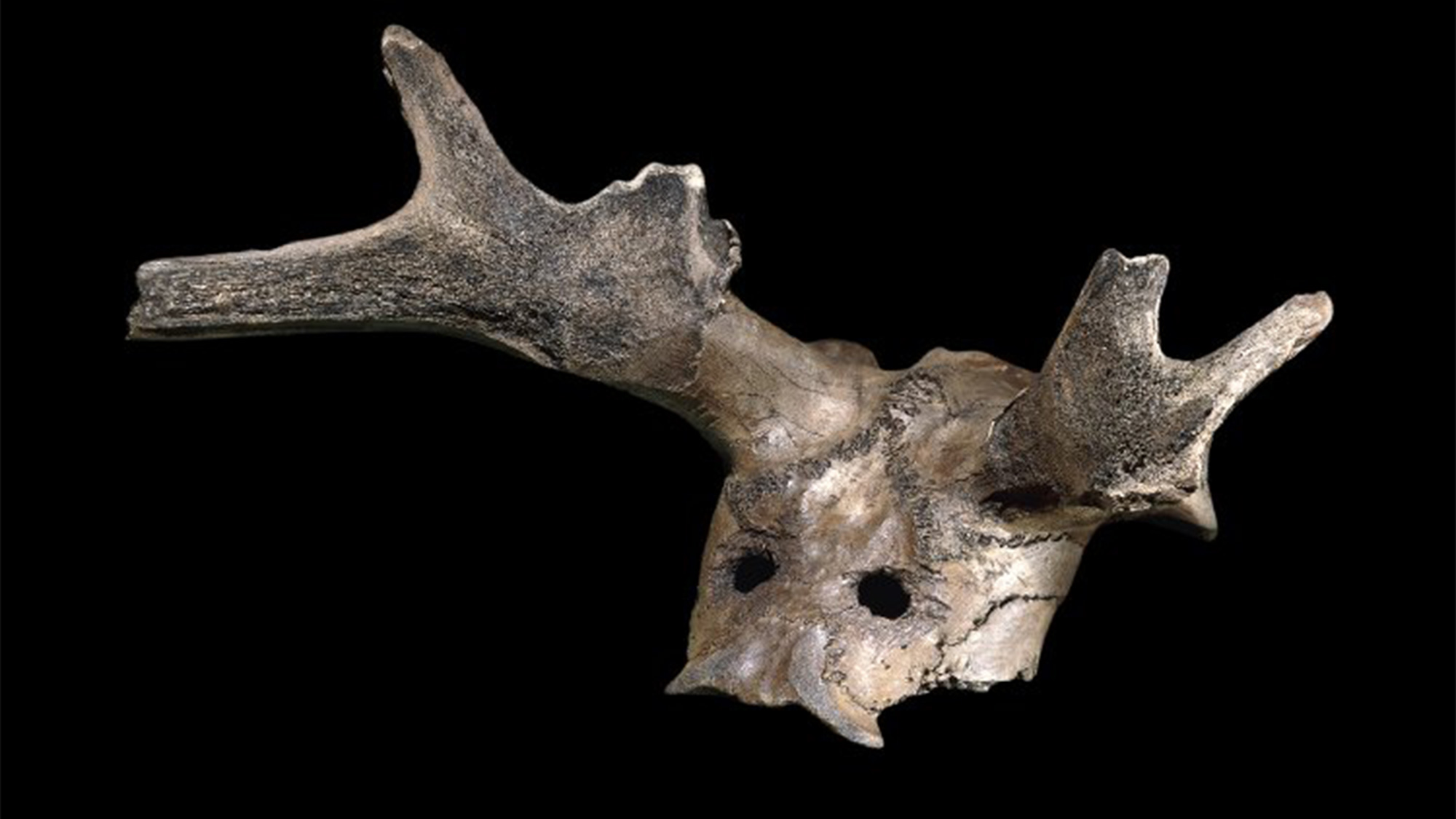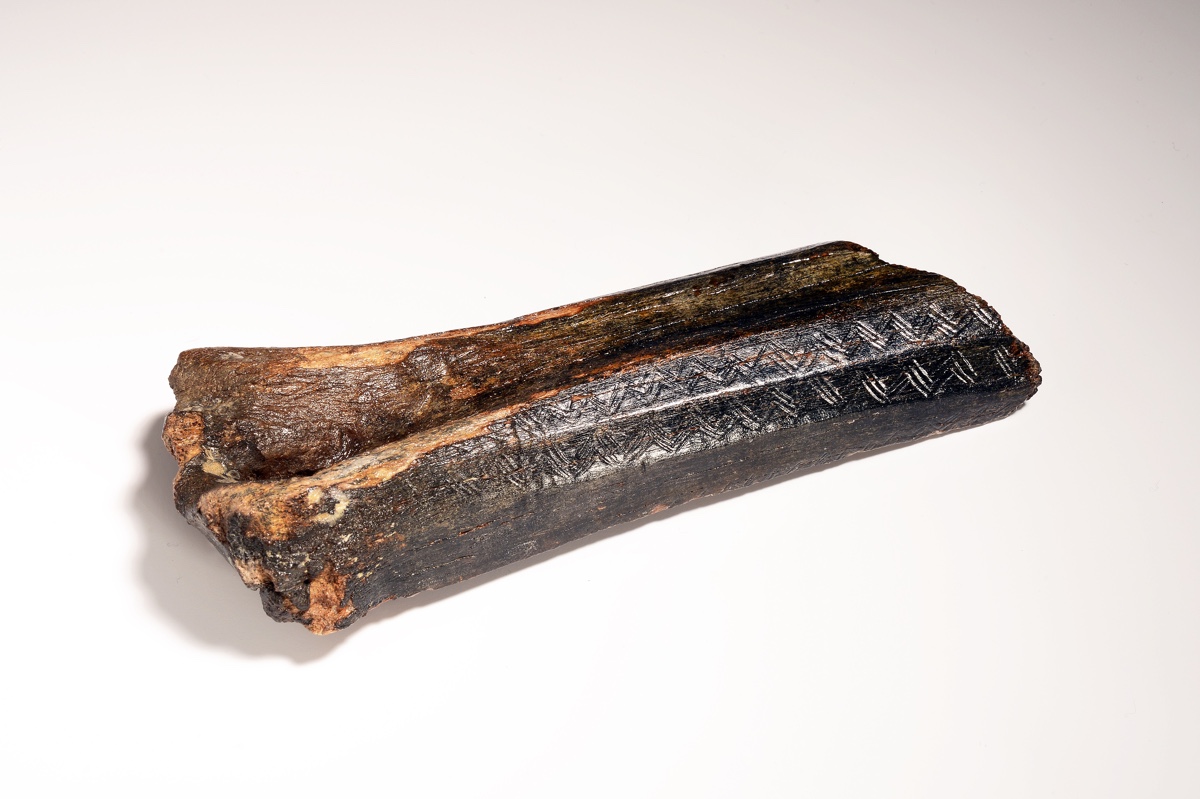Back to the Stone Age: 17 key milestones in Paleolithic life
The Stone Age may not have been "The Flintstones," but there were definitely caveman qualities to it.
Life — and Death — in the Stone Age
The Stone Age may not have been "The Flintstones," but there were definitely caveman qualities to it.
There were absolutely no modern conveniences — like electricity, written words, modern medicine or the internet, to take just a few developments — but Stone Age humans still did many modern human-like things, such as eating, sleeping, making clothes, and creating music and art, such as this ivory carving of a human head, known as the Venus of Brassempouy and dated to about 23,000 years ago.
So let's take a look at how our ancestors lived and died — in the Stone Age.
Hand axes
Archaeologists divide the Stone Age into three very broad periods before humans learned to make and use metal tools: the Paleolithic, or Old Stone Age; the Mesolithic, or Middle Stone Age; and the Neolithic, or New Stone Age.
The oldest division of the Old Stone Age is called the Lower Paleolithic, which spans a huge era of prehistory from about 3 million to 300,000 years ago.
For instance, Acheulean hand axes (shown in the image) from southern France are thought to have been made by the early human species Homo erectus about half a million years ago. Similar tools have been found throughout Africa, Asia and Europe — the earliest from around 1.76 million years ago.
Hand axes like these were used mainly for cutting the skin and meat of hunted or scavenged animals. They were made by chipping away at the edges of hard rocks, such as flint, obsidian and granite, to make sharp edges.
Get the world’s most fascinating discoveries delivered straight to your inbox.
Cave dwellings
Archaeologists date the Middle Paleolithic from about 300,000 to 30,000 years ago. During this period, anatomically modern humans are thought to have migrated out of Africa and have begun interacting with and replacing earlier human relatives, such as Neanderthals and Denosovans, in Asia and Europe.
Although the stone tools didn't change much, the Middle Paleolithic saw the use of fire became widespread. People at this early time lived in temporary shelters of branches, or in caves and rock shelters where they could find them.
This image shows the Bruniquel Cave in southern France. Mysterious ring-shaped structures on the floor of the cave were made from broken and burned stalactites about 176,000 years ago, when Neanderthals were the only early human species known to live in Europe.
Archaeologists think the ring structures probably had some sort of ceremonial purpose — but what that might have been is not known.
Archaic spears
Early humans grouped together in family bands of 30 to 50 people, who subsisted mainly by gathering plants, scavenging, hunting and fishing.
The earliest weapons on record are wooden spears from northern Germany, which date to between 400,000 and 380,000 years ago, when the early human relatives Homo heidelbergensis lived in Europe. The weapons were shaped from branches of spruce and pine trees.
Recent research has shown that later hunters were able to kill their animal prey at a distance with spears: For instance, a study of the wounds on deer bones found at Neanderthal hunting sites show that the spears were thrown at their prey from several feet away, instead of being used in an attack at close quarters.
Cave art
The Upper Paleolithic period dates from between 50,000 and 10,000 years ago, depending on the region. This was the time when anatomically modern humans — Homo sapiens — replaced earlier lineages throughout the world, such as Neanderthals and Denisovans — although DNA studies show that they sometimes interbred with them.
The Upper Paleolithic period was marked by big changes in stone tools. Instead of the general-purpose stone tools used for hundreds of thousands of years, specialized stone tools began to be developed for specific tasks — such as hafted axes for cutting wood.
This period also saw a big increase in figurative artworks, including cave paintings, rock sculptures, and bone, antler and ivory carvings. The natural pigment paintings on the walls of the Altamira cave in northern Spain date from the Upper Paleolithic period, around 30,000 years ago.
Making music
Among the very early finds from the Upper Paleolithic period is this evidence of a human musical sense —and the creativity that went with it.
Shown here is a fragment of a flute made from the hollow bones of an ancient vulture and dated to between 43,000 and 40,000 years-old. That makes it the oldest known musical instrument, and the earliest evidence for human creativity.
The flute fragment was found in 2009, in a cave in the Swabian Alps in southwest Germany where some of the oldest known cave art has also been found. It has a V-shaped mouthpiece that produced a note when air was blown across it; the note could be varied by placing fingers on its five drilled holes.
The archaeologists who found it speculate that playing music might have even given Homo sapiens an evolutionary edge over earlier human species, by improving their communications and creating tighter social bonds.
Venus figurines
The so-called "Venus" figurines are one of the characteristic art forms of the Upper Paleolithic period.
Most of the Venus figurines date to between 28,000 and 25,000 years ago and have been found across Europe and Eurasia.
The oldest found so far is the 2-inch-long (5 centimeters) Venus of Hohle Fels, which is made from mammoth ivory. Like the vulture bone flute, it was found in a cave in the Swabian Alps in southwest Germany, and is thought to be at least 35,000 years old.
One of the most famous figurines is the Venus of Willendorf, found in Austria in 1908. Itdates to between 32,000 and 27,000 years ago.
Venus figurines were given the name of an ancient Greek goddess in the 19th century, because they often portrayed a pregnant woman, and it was thought they represented a prehistoric goddess figure; but archaeologists have also found a few Venus figurines portraying males, or combining female and male attributes.
Bone and antler carvings
Many of the finest artworks from the Upper Paleolithic period are ancient carvings of bone or antler — relatively soft but durable materials that could be easily shaped with stone tools and easily carried from place to place.
Bone and antler carvings from this time included figurative sculptures of people, in the form of Venus figurines; body ornaments such as necklaces; and portrayals of animals, which may have been used as magical charms for hunting.
This carving, made from reindeer antler, was found in a rock shelter in southwest France, and is thought to date from between 20,000 and 12,000 years ago.
It shows a bison — a common herd animal at the time, but now extinct in Europe — apparently turning its head to lick an insect bite.
Specialized spears
Hunting weapons like spears and arrows also saw big changes from the specialization of tools in the Upper Paleolithic period.
As the shaping of bones and antlers became common, they were formed into spear points, arrowheads, harpoons and fishhooks — often highly decorated, and with intricate rows of barbs to prevent them from being shaken loose by fleeing prey.
These antler spear points from southwest France are dated to between 19,000 and 11,000 years ago.
Ritual or hunting?
After the Upper Paleolithic comes the Middle Stone Age, or Mesolithic period. Scientists disagree if this period really deserves its own name; another term for it is the Epipaleolithic period, which signifies the end of the Old Stone Age.
Both terms encompass the end of human hunter-gatherer societies before the revolutions of the Neolithic period. In the Near East and Asia, the Mesolithic spanned from between 20,000 and 8,000 years ago. In Europe, because of the later adoption of Neolithic tools and techniques, the Mesolithic spanned from around 15,000 to 5,000 years ago.
This deer mask is one of around 30 found at Star Carr, a Mesolithic settlement in Yorkshire in northern England that was located beside an ancient lake.
Archaeologists think headdresses like this were worn as a mask for ritual performances, or perhaps as a disguise when hunting other deer.
Sunken lands
The Mesolithic period for humans was a time of severe climate change across the world. At this time, the ice sheets that covered much of northern Europe, Asia and North America began to melt away, creating new lands that became populated by animal herds and people.
Between what is now England and the Netherlands, a vast area known as Doggerland was exposed when the ice sheets there melted around 18,000 years ago — but it sank beneath the waves about 6,000 years later, as the level of the North Sea rose.
Archaeologists have found several Mesolithic human remains and artifacts that have been dredged or fished up from the sunken lands.
The finds in the Dutch waters of the North Sea include a 13,000-year-old skull fragment of what's known as the world's "oldest Dutchwoman," who was one of the hunter-gatherer people of Doggerland, and a bison bone carved with intricate zigzag patterns, called the "oldest Dutch artwork."
Tom Metcalfe is a freelance journalist and regular Live Science contributor who is based in London in the United Kingdom. Tom writes mainly about science, space, archaeology, the Earth and the oceans. He has also written for the BBC, NBC News, National Geographic, Scientific American, Air & Space, and many others.



